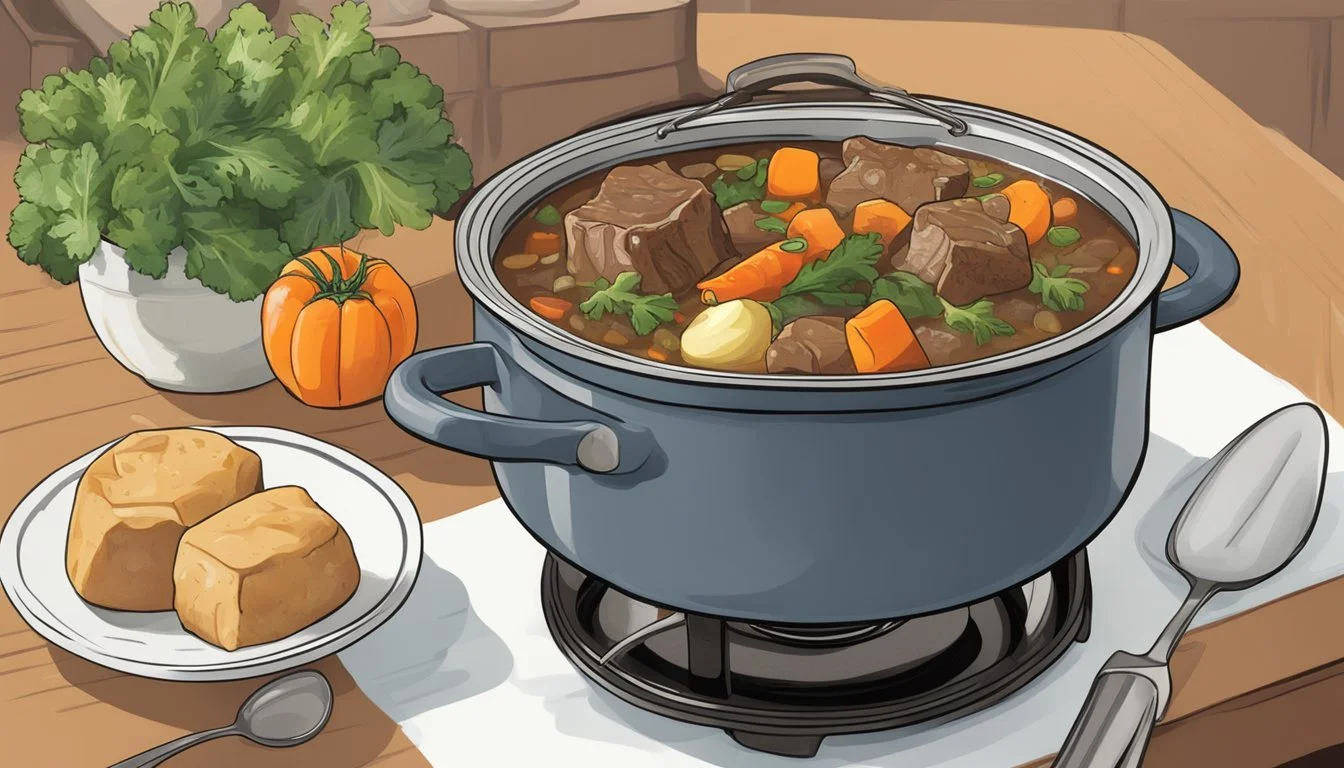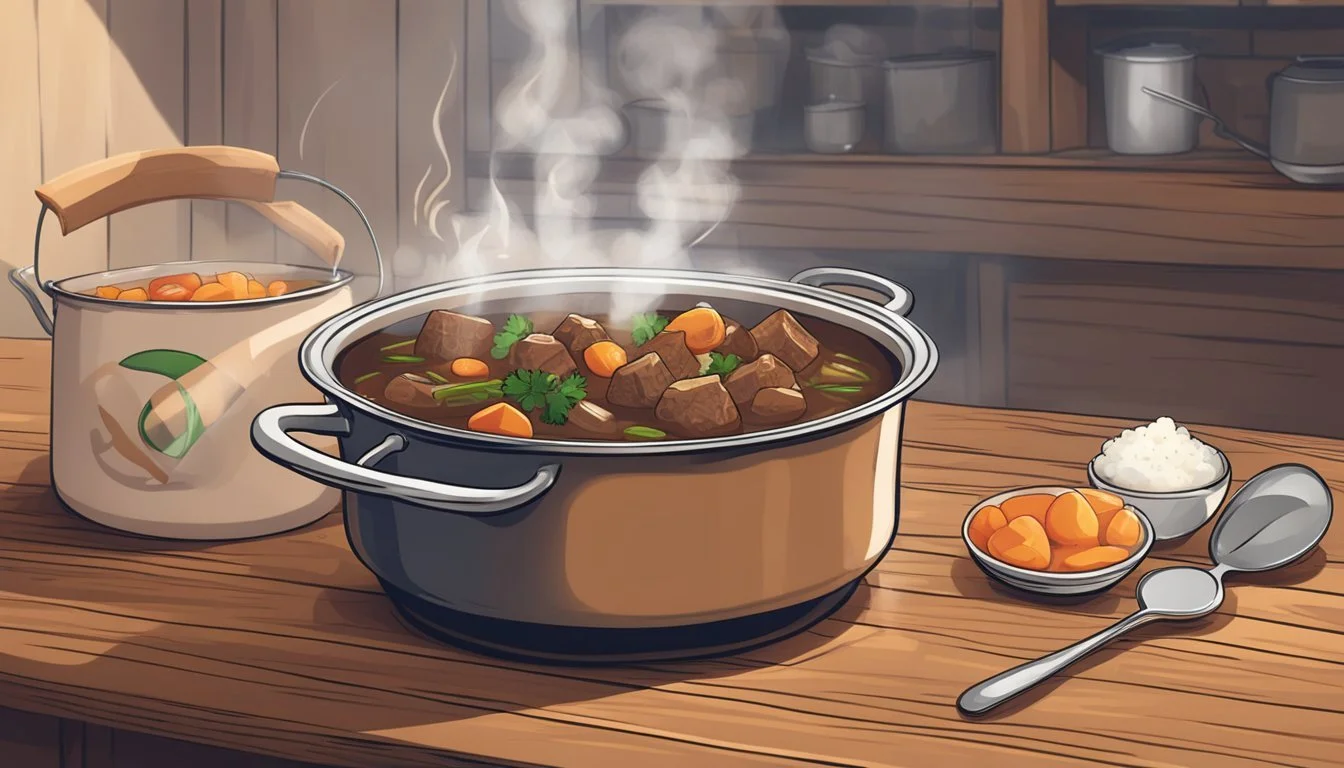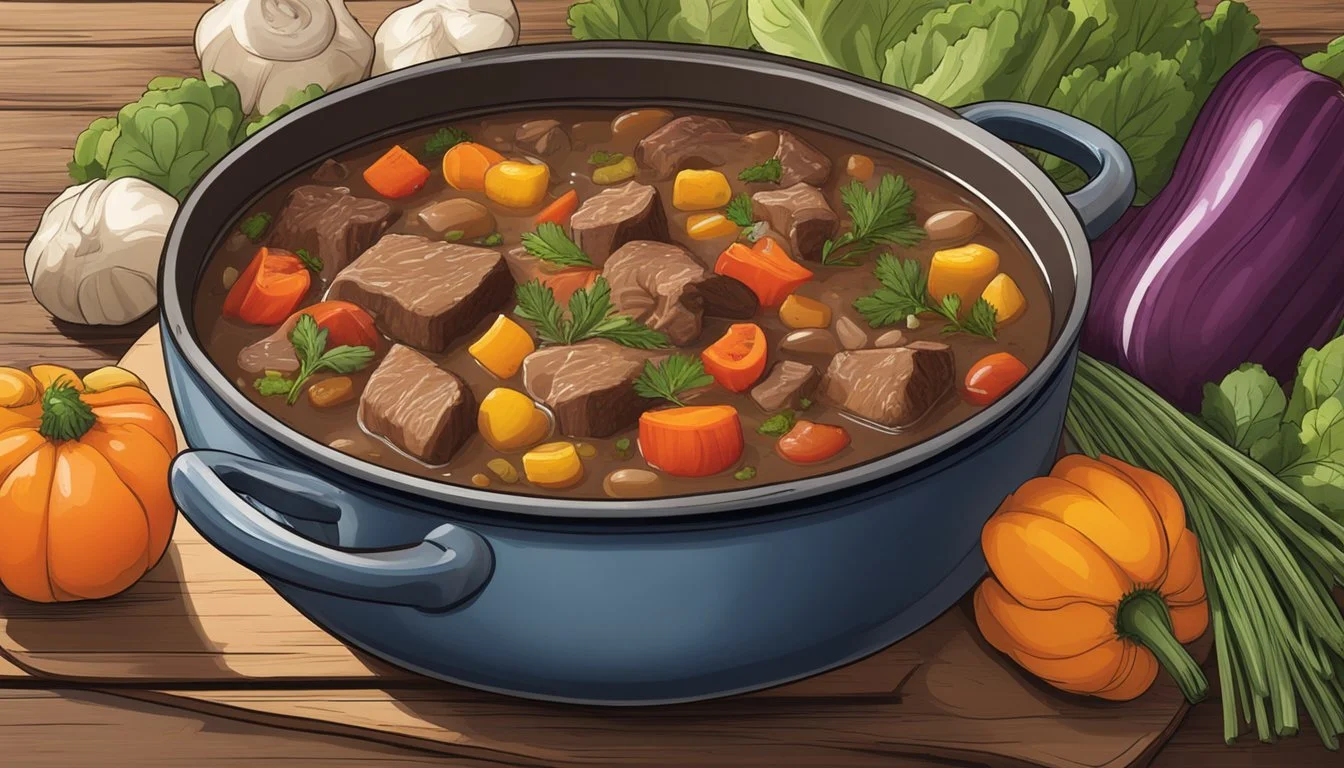How Long Does Gluten-Free Beef Stew Last?
Shelf Life and Storage Tips
Wondering how long your delicious gluten-free beef stew will last? This is a common concern for home cooks seeking to maximize the shelf life of their homemade meals while ensuring safety and quality. This guide will provide you with the essential information to store your beef stew properly and keep it fresh for as long as possible.
Properly stored, gluten-free beef stew can last in the refrigerator for 3 to 4 days. For those looking to keep it even longer, freezing is an excellent option. Make sure the stew is cooled to room temperature before transferring it to an airtight container. In the freezer, the stew can last for up to 3 months without sacrificing its flavor or texture.
Knowing how to store your stew not only helps in meal planning but also reduces food waste. Whether you are using a slow cooker, Instant Pot, or stove top, each method essentially yields the same outcome when it comes to storage duration. This article will delve into specific storage techniques and tips, ensuring your stew tastes as good on day four as it does on day one.
Understanding Gluten-Free Beef Stew
Gluten-free beef stew provides a nutritious and hearty meal option for those with gluten sensitivities. It requires specific ingredients to ensure it remains free from gluten contamination.
What Constitutes Gluten-Free Stew
Gluten-free beef stew is made without any gluten-containing ingredients such as wheat, barley, or rye. The standard components include beef, vegetables, and a thickening agent that is safe for individuals with celiac disease or gluten intolerance.
Common gluten-free alternatives for thickening the stew are gluten-free flour or cornstarch. Additionally, gluten-free beef broth and gluten-free Worcestershire sauce ensure the stew remains suitable for those avoiding gluten.
Proper preparation involves avoiding cross-contamination by using clean utensils and kitchen surfaces.
Selecting Ingredients for Gluten-Free Stew
Choosing the right ingredients is crucial for making gluten-free beef stew. Start with fresh, unprocessed meat and vegetables. Look for labels indicating gluten-free when selecting products like beef broth and seasonings.
Beef should be seared to lock in flavor before simmering with gluten-free beef broth. Use thickening agents such as cornstarch or gluten-free flour to achieve the desired consistency. Gluten-free Worcestershire sauce can add depth to the flavor profile without introducing gluten.
Always check labels for hidden sources of gluten, ensuring the ingredient list is free from wheat, barley, and rye derivatives. Proper ingredient selection guarantees a safe and enjoyable meal for those adhering to a gluten-free diet.
Preparation Techniques
Preparing a delicious gluten-free beef stew involves selecting the right cut of beef, choosing and prepping vegetables, and using appropriate thickening agents to achieve the perfect consistency.
Choosing the Right Cut of Beef
For a tender, flavorful stew, chuck roast or beef chuck are ideal choices. These cuts have a good balance of meat and fat, which adds richness to the stew.
Cut the beef into uniform, bite-sized pieces to ensure even cooking.
Season the meat generously with salt and *pepper* before searing. Searing the beef in a hot pan with olive oil helps to lock in juices and develop a deep flavor.
A well-seared beef also contributes to a richer color in the stew.
Vegetable Selection and Prep
Carrots, onions, and potatoes are classic choices for beef stew. These vegetables not only add flavor but also provide essential nutrients and texture. Carrots should be peeled and sliced into thick rounds to prevent them from becoming mushy during long cooking times.
Onions can be diced or thinly sliced, depending on the preferred texture. Potatoes, such as Yukon Gold or red potatoes, are excellent because they hold their shape well during cooking.
Peel if desired and cut into chunks roughly the same size as the beef for consistency.
Thickening Agents for Gluten-Free Stew
Traditional stews may use flour as a thickener, but for a gluten-free version, cornstarch or arrowroot work well. These starches should be mixed with a small amount of cold water to form a slurry before being added to the hot stew. This prevents clumping and ensures smooth integration.
Add the slurry gradually and stir continuously until the stew reaches the desired thickness.
If the stew becomes too thick, simply add a bit more beef broth.
For a unique twist, consider adding a small amount of gluten-free cornbread crumbs as a thickener.
They can also add a slightly sweet flavor profile to the stew.
Cooking Methods
Different cooking methods can affect the tenderness and flavor of gluten-free beef stew. Understanding the key aspects of each method helps in choosing the best one for your needs.
Using a Slow Cooker
Slow cookers, including brands like Crockpot, are ideal for making beef stew. Begin by searing the beef to enhance flavor, then transfer it to the slow cooker with vegetables and broth. Slow cook the stew on low for 4-6 hours or until the beef is tender. This method allows the flavors to develop deeply, with minimal fuss. Remember: Avoid lifting the lid frequently to maintain a consistent temperature.
Making Stew in an Instant Pot
The Instant Pot offers a quick and efficient method to make beef stew. Start with the sauté function to brown the beef, then add your vegetables and gluten-free broth. Seal the lid and set the pot to the meat/stew setting, typically cooking for around 35 minutes. Once done, release the pressure manually. The Instant Pot maintains tenderness and depth of flavor, even under time constraints.
Traditional Stovetop Preparation
For stovetop preparation, use a Dutch oven to ensure even heat distribution. Sear the beef, add vegetables, and pour in the broth. Bring the mixture to a boil, then reduce to a simmer. Cover and cook for about 1.5 to 2 hours, stirring occasionally. This classic method gives the cook control over the heat and ingredients, which may result in a well-balanced stew.
Oven Method for Beef Stew
Cooking beef stew in the oven requires a heavy-lidded pot for best results. Preheat the oven to 325°F (160°C). Brown the beef on the stovetop first, then add vegetables and broth. Cover the pot and bake in the oven for 2 to 3 hours. The oven’s even heat ensures everything cooks uniformly, with a tender texture and rich flavor that makes this method worth the wait.
Storage and Shelf Life
Proper storage is essential to ensure the longevity of gluten-free beef stew. The key factors include refrigerating and freezing techniques, each offering different benefits and timelines.
Refrigerating Beef Stew
Gluten-free beef stew can be stored in the refrigerator for 3 to 4 days. It's crucial to place the stew in an airtight container to prevent contamination and maintain quality. Make sure the refrigerator temperature is set to 40°F (4°C) or below.
After cooking, allow the stew to cool to room temperature before refrigerating. This prevents condensation and potential bacterial growth. If the stew was left out for more than 2 hours, it is safer to discard it.
Always reheat refrigerated beef stew to a minimum internal temperature of 165°F (74°C) before consuming. This kills any bacteria that might have developed during storage.
Freezing and Defrosting Techniques
Freezing gluten-free beef stew extends its shelf life to 4 to 6 months. Use heavy-duty freezer bags or airtight containers to prevent freezer burn and maintain flavor. Label the containers with dates to keep track of storage time.
To freeze, allow the stew to cool completely. Portion it into manageable sizes for easier defrosting and reheating later. When ready to consume, defrost the stew in the refrigerator overnight.
Avoid microwaving frozen stew directly as this can result in uneven heating. Reheat the defrosted stew on the stove or in the microwave, ensuring it reaches an internal temperature of 165°F (74°C). This method preserves the texture and taste effectively.
Serving and Pairing Suggestions
A gluten-free beef stew offers a comforting and savory taste that's perfect for a hearty meal. To enhance the meal's experience, consider pairing it with complementary sides and beverages that amplify its flavors and textures.
Accompaniments
Complementary sides can elevate the overall meal experience. Gluten-free bread or gluten-free cornbread are perfect for soaking up the rich, savory broth. These options ensure that gluten-sensitive diners can still enjoy a traditional hearty pairing.
Mashed potatoes or polenta add a creamy texture that balances the stew’s robustness. Alternatively, a side of steamed green beans or broccoli provides a light, fresh contrast to the stew’s richness. Including a mixed green salad, perhaps with a light vinaigrette, adds a refreshing element.
For extra comfort and heartiness, serving the stew over a bed of quinoa or rice can be a wonderful way to enjoy it. If you're looking for additional vegetables, roasted carrots or celery are great choices to consider.
Wine and Beverage Pairings
The savory and rich profile of gluten-free beef stew pairs well with a variety of wines and beverages. Red wines such as Cabernet Sauvignon, Pinot Noir, or Merlot enhance the stew's flavors without overpowering the dish. These wines bring out the natural flavors of the beef and vegetables, complementing the stew’s depth.
For those who prefer non-alcoholic options, consider a robust black tea or a flavorful apple cider. These beverages provide a warmth that matches well with the hearty soup.
Additionally, for a light and refreshing contrast, serve the stew with a glass of sparkling water or iced tea. This adds a refreshing element to the meal without contrasting too strongly with the stew's savoriness.
Health and Nutrition
When it comes to gluten-free beef stew, understanding the health and nutrition benefits is crucial. This dish is not only hearty and comforting but also accommodates various dietary needs.
Benefits of Gluten-Free Diet
A gluten-free diet is essential for individuals with celiac disease or gluten sensitivity. By eliminating gluten, they can avoid adverse reactions like bloating, diarrhea, and abdominal pain. A gluten-free diet can also reduce inflammation and improve energy levels, making it a valuable choice for many.
Nutrition Information: Gluten-free beef stew is typically packed with essential nutrients. Ingredients like beef stock and vegetables contribute to a balanced diet. Beef provides protein, iron, and B vitamins, while vegetables add fiber, vitamins, and minerals.
By choosing gluten-free beef stew seasoning, individuals can enjoy flavorful meals without compromising their health. It's important to read labels to avoid hidden gluten sources. For those who are also dairy-free, ensuring that the stew does not contain dairy products is crucial.
Incorporating gluten-free options into one's diet can lead to better digestive health and overall well-being. With the right ingredients, gluten-free beef stew can be both healthy and satisfying.
Final Touches and Presentation
Applying the final touches and presenting your gluten-free beef stew can make all the difference in taste and visual appeal.
Garnishing and Enhancing Flavor
Adding fresh rosemary, thyme, and bay leaves can elevate the flavor profile of the stew. These herbs not only add fragrance but also contribute subtle notes that blend perfectly with beef.
For a robust taste, consider adding gluten-free Worcestershire sauce, a dash of garlic, or a season blend. Mixing in sweet or gold potatoes—like Yukon gold potatoes—ensures a rich texture.
Mushrooms can introduce an earthy depth, complementing the beef’s savoriness. If the stew is too dry, incorporating more broth or water can help achieve the desired consistency.
Plating Techniques
Proper plating enhances the visual appeal and dining experience. Serve the stew in a deep, wide bowl to retain warmth and showcase the hearty ingredients.
Arrange larger pieces—like carrots and potatoes—strategically on top for a more polished look.
Garnish with a sprig of fresh rosemary or a bay leaf for an elegant touch. Accompanying the stew with a side of crusty gluten-free bread can complete the meal.
Adding a sprinkle of chopped parsley or a drizzle of olive oil on top can enhance both flavor and presentation.
Supplementary Tips
To maximize the flavor and longevity of your gluten-free beef stew, optimizing preparation and cooking techniques is crucial. Avoiding common mistakes will ensure the dish remains delicious and safe for consumption.
Improving Prep and Cook Time
Efficient use of kitchen tools like a sharp knife, cutting board, and spatula can significantly reduce prep time. Pre-cutting vegetables and measuring out spices in advance will streamline the process.
Browning the beef is essential for developing deep flavors. Searing the meat in small batches can prevent overcrowding and ensure even browning. Using a dutch oven or instant pot can speed up cooking while retaining moisture and tenderness.
For slow cooker beef stew, cooking on "low" for several hours allows flavors to meld perfectly. Quick methods like the instant pot require less time but still yield rich results.
Common Mistakes to Avoid
Overcrowding the meat during searing can lead to steaming instead of browning. Avoid this by working in small batches. Using the wrong pot, such as a thin or non-heat-retaining one, can affect cooking times and flavors.
Skipping the deglazing step when bits of browned meat stick to the pot's bottom will result in lost flavor. Always scrape these up with a soft spatula and include them in the stew.
Incorrect vegetable sizes can lead to uneven cooking. Ensure uniform cuts to maintain consistency. For those new to gluten-free cooking, verify that all components, including broths and thickeners, are truly gluten-free to avoid contamination.
Summary and Conclusion
A gluten-free beef stew can be a hearty and filling dish that's a family favorite, especially on a cold day. When stored properly, the stew can last for several days and retain its flavor and texture.
Storage Guidelines
Refrigeration: Store the stew in an airtight container.
Shelf Life: Typically lasts 3-4 days in the refrigerator.
Freezing: Freeze portions in airtight containers or freezer bags for up to 3 months.
Tips for Best Quality
Ensure the stew cools to room temperature before refrigeration.
Reheat the stew gently on the stove or microwave to maintain texture of the beef chunks.
Stir occasionally while reheating to evenly distribute heat.
Visual & Taste Indicators
Fresh Stew Signs:
Bright color
Pleasant aroma
Tender beef chunks
Spoilage Signs:
Sour smell
Off-color
Slimy texture on beef or vegetables









